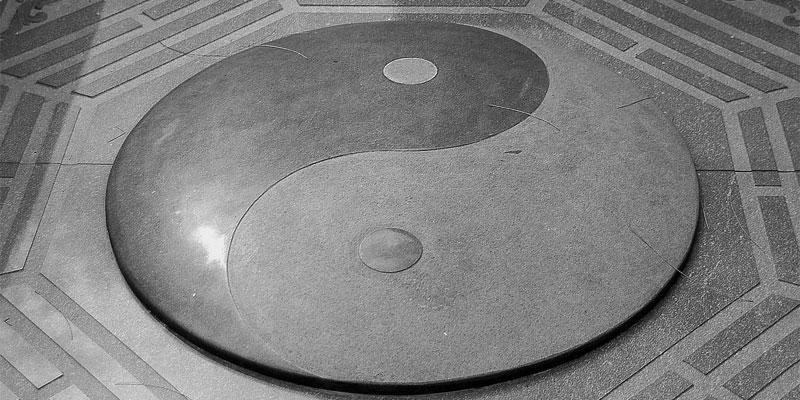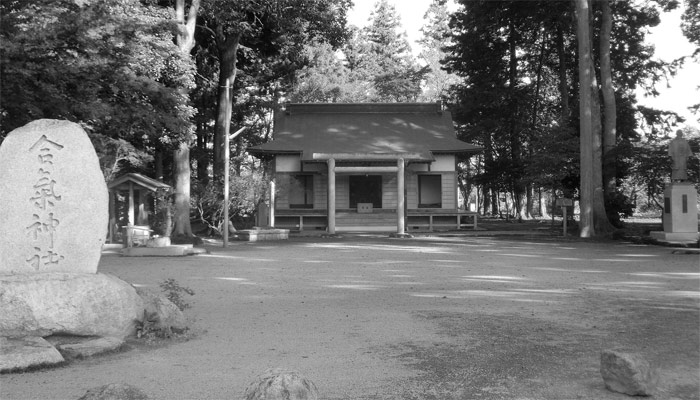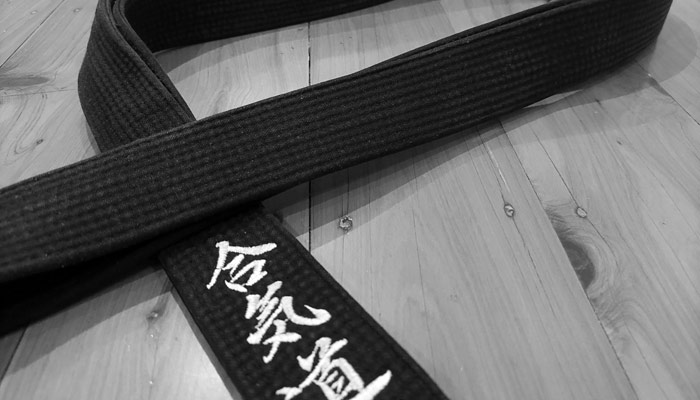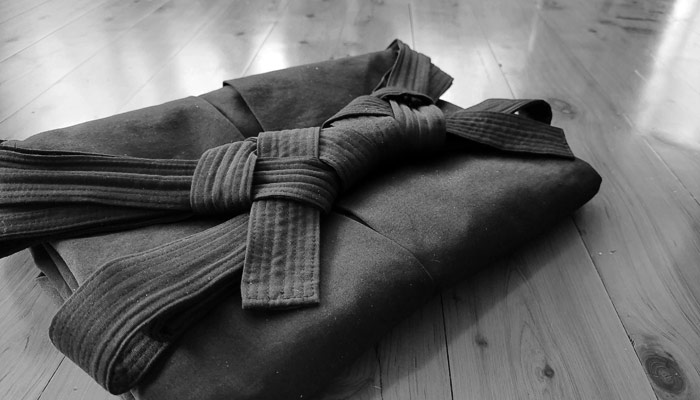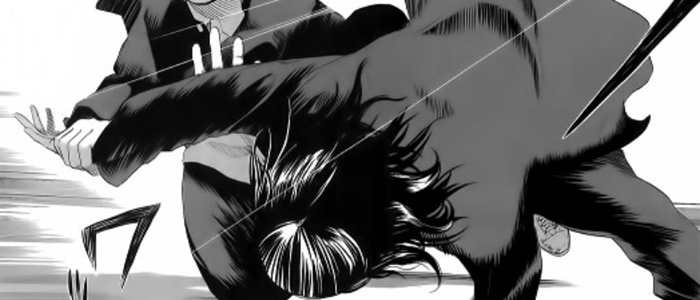Culture 文化
-
Beyond Opposites: Rethinking Ju and Go in Aikido Philosophy
Ju 柔 (Softness) and Go 剛 (Hardness) are terms frequently used in martial arts. Conceptually, we often refer to a martial art or style as being “soft” or “hard”, but is this a meaningful or accurate expression? What are the true meanings of 柔 and 剛? Before diving into the details, let’s start with the question of whether it should be written as 剛柔 (Go-Ju) or 柔剛 (Ju-Go). Historically, 剛柔 is the more traditional and commonly seen order in Chinese classics and early Japanese literature. This form appears in ancient political and philosophical texts, such as Confucius’s Zhong Yong 中庸 (The Doctrine of the Mean) and the military treatise The…
-
Aikido: 合氣道 or 合気道?
To determine whether Aikido should be written as 合氣道 or 合気道, it is essential to understand the history and differences between the kanji 氣 (Ki) and 気 (Ki). The character 氣 is the original kanji from China, while 気 is the simplified Japanese version. 氣 (Qi in Chinese) is composed of the radicals 气 and 米. 气 (Qi) is the original form of 氣, pictogram appears in Jiaguwen 甲骨文 (script inscribed on animal bones and tortoise shells) for cloud vapor or moving gas, also representing inhaling and exhaling breath. 米 is rice. The earliest recorded use of 氣 dates back to 25-220 AD, initially associated with food, due to rice…
-
Seiza and Zarei: Embodying Japanese Cultural Values in Aikido
Seiza 正座 and Zarei 座礼, two fundamental practices in Aikido, embody profound cultural and philosophical significance rooted in Japanese tradition. Sei means correct or proper, and Za means sit, so Seiza literally means “correct sitting.” It holds deep historical roots in Japanese culture, particularly within martial arts and ceremonial contexts. In Aikido, practitioners assume the Seiza position by kneeling with their buttocks resting on their heels, both feet flat on the mat, and the big toes may slightly overlap, maintaining an upright posture with a straight spine. Hands rest on the thighs with palms facing down. Taking slow, deep breaths, practitioners relax and cultivate a sense of openness and receptivity.…
-
Unleashing the Power of Aiki: Arcade Fighters in Motion
Arcade fighting games have long served as arenas where diverse martial arts styles collide. Among the plethora of techniques showcased in these games, Aikido and similar martial arts have secured their place in the roster of iconic characters. This article delves into the portrayal of Aikido and akin disciplines in arcade fighting games, examining their impact on character design and gameplay dynamics. Aikido, renowned for its focus on redirecting an opponent’s energy with harmonious movement, has intrigued game developers aiming to craft distinctive and authentic characters. The core tenets of this martial art, such as blending, circular motion, and joint locks, align seamlessly with the dynamic and acrobatic nature of…
-
Aikido and Tokyo Metropolitan Police
Martial arts training stands as a cornerstone within the Tokyo Metropolitan Police Department 警視庁, serving as a pivotal element in the physical and mental preparation of police officers entering the demanding realm of law enforcement. At the Metropolitan Police Academy 警察学校, martial arts form a compulsory subject, with cadets dedicating at least an hour each day to training. While both men and women share this training requirement, they have the flexibility to choose different disciplines based on their individual preferences and perceived benefits. Male police officers often opt for Judo 柔道 or Kendo 剣道, disciplines that emphasize grappling techniques, striking maneuvers, and mental resilience. Conversely, female officers have the added…
-
Purification of Body and Soul: Misogi in Japanese Culture and Aikido
Misogi 禊, deeply rooted in Japanese culture and religious tradition, is a ritual of purification aimed at cleansing both the body and the spirit. Typically, the ritual involves immersing oneself in water, often a natural body of water like a river or waterfall, to wash away impurities and negative energies. The attire is typically white garments, but in many cases, men may wear a loincloth. The practice dates back centuries, and it is said to originate from Izanagi 伊邪那岐, a kami in Japanese mythology, who felt contaminated and purified himself with water after his visit to Yomi 黄泉, the world of death, to see his deceased wife Izanami 伊邪那美. Misogi…
-
Aiki Jinja: Bridging Spirituality and Martial Arts in Iwama
Nestled in the tranquil town of Iwama 岩間, Japan, Aiki Jinja 合気神社 (Aiki Shrine) stands as a testament to the convergence of martial arts and spiritual reverence. In 1942, Ueshiba and his wife, Hatsu, relocated from Tokyo to Iwama. In this little town, Ueshiba dedicated himself to the concept of martial and agricultural unity 武農一如, acquiring land and engaging in farming activities. Subsequently, he constructed both a dojo and a shrine, the Aiki Jinja. He referred to this place as the birthplace of aikido 合気道の産屋. Over time, this site has gained profound significance, now regarded as a sacred ground by countless aikido practitioners. Ueshiba constructed Aiki Jinja as a sanctuary…
-
Development of Dan Ranking System in Japanese Martial Arts and its Adoption in Aikido
Martial arts have been an integral part of Japanese culture for centuries. One of the most significant aspects in their development is the introduction of the dan ranking system. The term “dan” 段, which literally means “stage”, was first used by Sansa Honinbo 本因坊 算砂, the founder of the Honinbo Go school in the late 16th century. Go 囲碁 is a traditional strategy board game originated from China and introduced to Japan around the 7th century. The game is played by two players who take turns placing black and white stones on a square grid board. The objective is to gain more territory on the board than your opponent by…
-
The Story Behind Aikido’s Traditional Attire: Hakama
A hakama 袴 is a traditional Japanese garment that has been worn in Japan for centuries. Originally, it was worn by nobles, court officials, and samurai warriors as a symbol of their status and rank. It naturally became the standard outfit for those who practice kobudo 古武道, including the samurai. Today, practitioners of these old arts, as well as modern arts such as aikido 合氣道, iaido 居合道, or kyudo 弓道, continue the tradition of wearing hakama during training. However, some arts have discarded this tradition due to various reasons such as practical reasons in judo 柔道 or origin/religious reasons in shorinji kempo 少林寺拳法. The history of the hakama in aikido…
-
The Rare Beauty of Aikido in Japanese Manga
The popularity of Japanese manga, or comics, has surged globally, largely due to their distinct storytelling, art style, and cultural significance. One popular genre of manga is martial arts, which spotlights the art of combat and various fighting styles. Numerous manga series have been created based on different martial arts, such as Karate, Judo, Kendo, Sumo, Kung Fu, Boxing and MMA. However, manga with Aikido as their primary storyline is rare. Evil Heart is one of the few popular Aikido manga series. It is a drama telling the story of Masaki Umeo, a high schooler with a bad temper who encounters an English teacher from Canada, who is also an…
